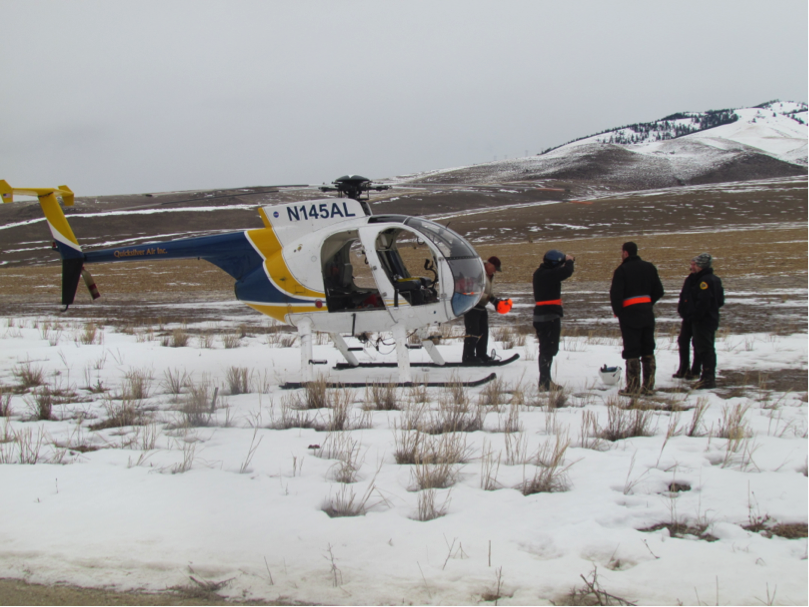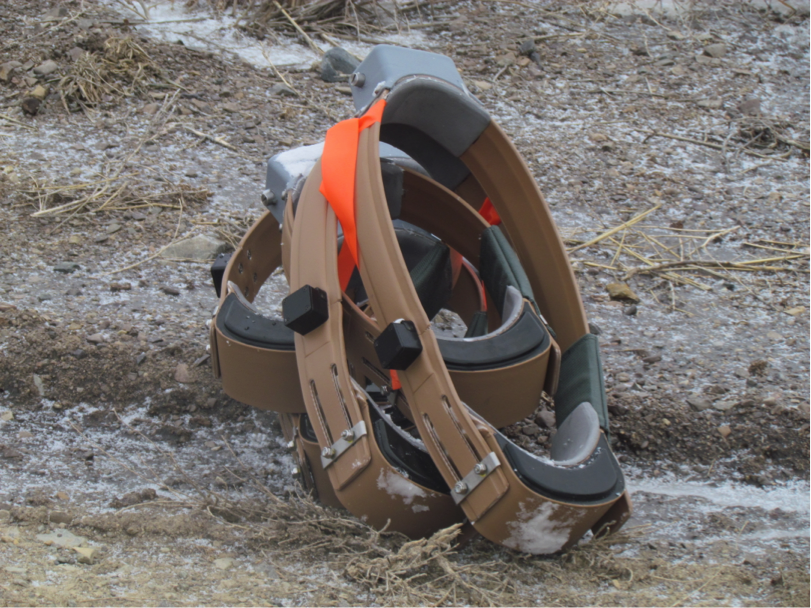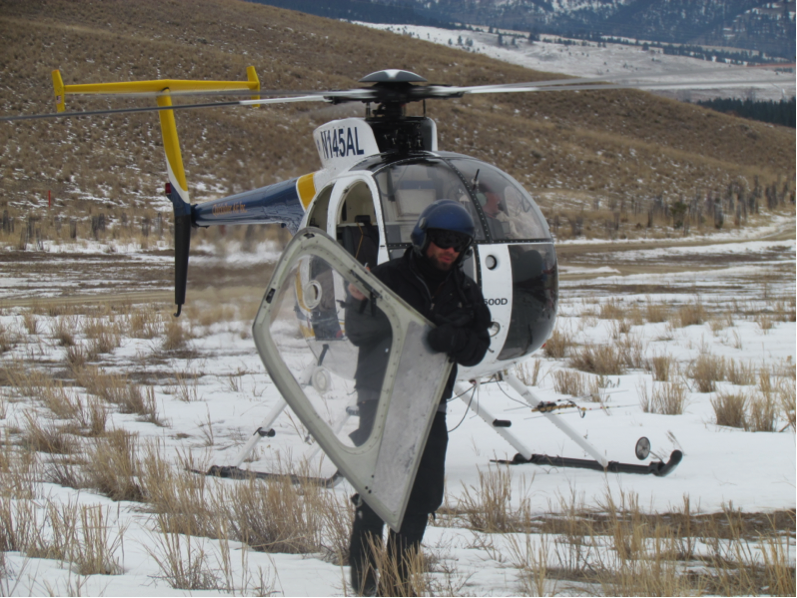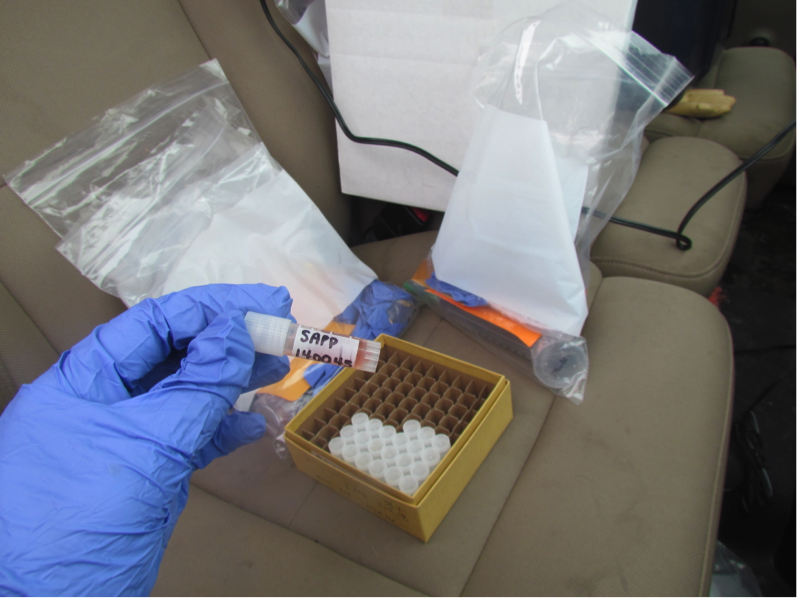
Elk Capture at MPG Ranch
Block title
A group gathered on a wintery morning near the ranch’s south gate to observe the Northern Sapphire Elk Research Project’s elk capture. Montana’s Fish, Wildlife and Parks biologists, a helicopter and crew, and a spotting plane geared up to net elk, fit them with radio collars and collect blood samples.

The helicopter crew discussed their plan of action in detail. After netting an elk, biologists would jump out and use hobbles stored around their waists to immobilize the animal. The team would need to communicate closely with one another and with the spotting plane in order to find and capture each elk.

These radio collars waited for pick-up by the helicopter crew. The orange flagging indicated a collar sized for a bull elk. During the rut, bulls’ necks swell, so the collars must accommodate this.

Removal of the helicopter’s doors allowed for easy exits. Nets were used instead of tranquilizers to capture the animals, so the team had to jump out of the aircraft after ensnaring each elk to hobble it. The elk remained conscious throughout the process, which improved body temperature regulation and shortened capture recovery time compared to tranquilizer use.

Helmets on and time for takeoff! The trailer in the background contained helicopter fuel and equipment.

Visitors and staff observed captures through spotting scopes. FWP caught a total of eleven elk before 1:00 p.m. During downtime, wildlife biologists provided information about their role in managing and researching local elk herds. Nathan Borg recently filled the FWP region 2 wildlife biologist position, and both he and previous region 2 biologist Craig Jourdonnais attended to keep observers informed about the capture events.

A data collection bag assigned to each elk contained feces and blood collection supplies. Biologists recorded heart rate and temperature several times throughout each capture to keep track of elk stress levels.

In the FWP truck, observers spun elk blood samples to separate the plasma, then poured the plasma into small vials.

Elk plasma tells biologists about thyroid function, disease, and overall health of the animal. On this vial, SAPP stands for “Sapphire elk herd.”



















